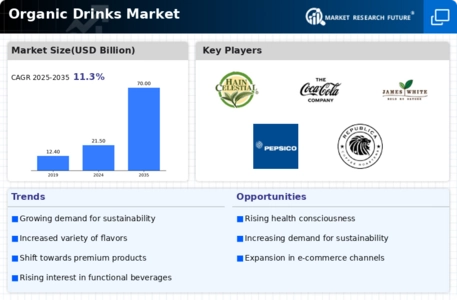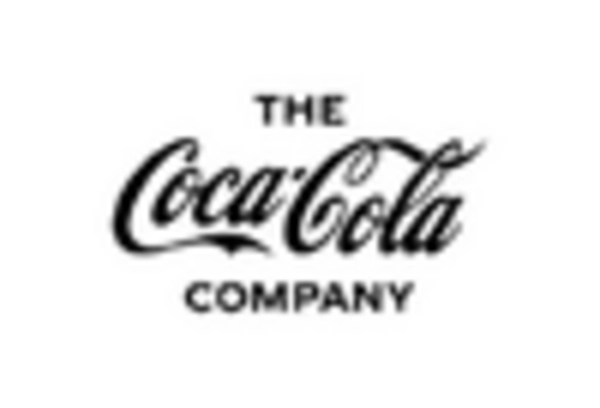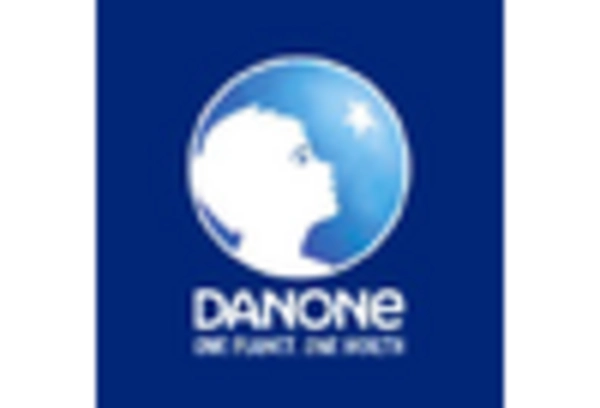Market Analysis
In-depth Analysis of Organic Drinks Market Industry Landscape
The market dynamics of the organic drinks segment are influenced by a variety of factors that collectively shape the industry's growth and evolution. One primary driver is the increasing consumer demand for healthier beverage options. As awareness of the potential health benefits associated with organic products grows, consumers are seeking organic drinks as a preferable alternative to conventional sugary and artificial beverages. The emphasis on natural ingredients, absence of synthetic additives, and overall nutritional value positions organic drinks as a choice aligned with health and wellness trends.
Regulatory factors play a crucial role in shaping the dynamics of the organic drinks market. Governments and certification bodies, such as the USDA Organic and various organic certification agencies, have established stringent standards to ensure the authenticity and quality of organic products. Adherence to these standards not only instills consumer confidence but also serves as a key market differentiator. The presence of recognized certification labels on organic drinks assures consumers of the product's organic status, influencing purchasing decisions and shaping market dynamics. Significant research and development initiatives undertaken by major automakers to enhance the shelf life, smoothness, taste, and nutritional content of their products are expected to positively impact market growth. These efforts reflect a commitment to advancing product quality and consumer satisfaction in the automotive industry.
The investment in research and development by leading automakers underscores their dedication to addressing key aspects of their goods, aiming to prolong shelf life and improve sensory attributes. This strategic focus on innovation extends beyond mere functionality, emphasizing the enhancement of taste and nutritional value in their offerings.
By prioritizing advancements in product attributes, automakers are positioned to meet evolving consumer expectations and preferences. The anticipated favorable influence on market growth signifies the importance of continuous improvement and innovation in the automotive sector. As these companies strive to deliver products that not only meet but exceed consumer demands, the ongoing research and development endeavors play a crucial role in shaping the future landscape of the automotive market. Economic factors, particularly the disposable income of consumers, impact the growth of the organic drinks market. As disposable incomes rise, consumers are more willing to invest in premium and healthier beverage options. While organic drinks often come with a premium price tag, the perceived health benefits and premium quality ingredients justify the expense for many consumers. However, market dynamics also involve the need for brands to balance premium quality with competitive pricing to appeal to a wider consumer base and capture market share.
Technological advancements in food and beverage production contribute to the market dynamics of organic drinks. Innovations in processing techniques, sustainable packaging, and distribution channels enhance the efficiency and sustainability of organic drink production. Additionally, advancements in organic farming practices and agricultural technologies impact the availability and cost of organic ingredients, influencing market dynamics.
Consumer preferences and evolving trends significantly shape the product offerings within the organic drinks market. Brands respond to the demand for diverse flavors, functional beverages, and unique formulations that cater to specific health and lifestyle needs. The market is witnessing an expansion beyond traditional categories like organic juices to include organic teas, plant-based milk alternatives, and innovative health-focused beverages. Companies that can adapt to changing consumer preferences are better positioned to thrive in the dynamic organic drinks market.
Sustainability considerations are increasingly influencing the market dynamics of organic drinks. Consumers are not only seeking healthier beverage options but also expressing a preference for brands that prioritize sustainability and ethical practices. Companies that emphasize environmentally conscious sourcing, ethical production methods, and eco-friendly packaging can gain a competitive edge in the market. Sustainability is becoming a key factor in consumer purchasing decisions, influencing the overall market dynamics of the organic drinks segment.
Global trends, such as the rise of plant-based diets and the focus on clean labels, intersect with the organic drinks market. Plant-based organic beverages, free from artificial additives and preservatives, align with the preferences of consumers seeking natural and ethical choices. The intersection of these trends contributes to the market dynamics, driving the demand for organic drinks and shaping the industry's trajectory.










Leave a Comment